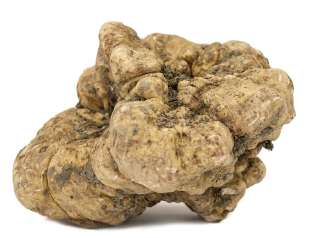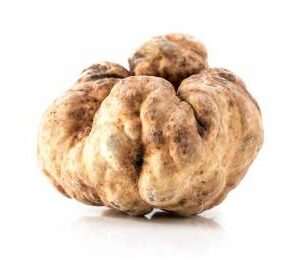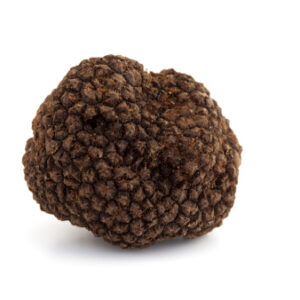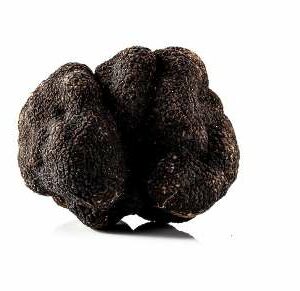Description
The Fine White Truffle, scientific name Tuber Magnatum Pico, in order to be born and develop, needs particular soils with equally particular climatic conditions: the soil must be soft and humid for most of the year, it must be rich in calcium and with good air circulation. It is therefore easy to understand that not all soils have these characteristics and precisely these environmental factors make the white truffle a rare and coveted fruit. If the black truffle of Norcia, in fact, conquers the top of the ranking of black truffles, the white truffle of Alba (or of Acqualagna) deserves by right the first place in the general classification of the most prized black and white truffles: it is in fact the truffle par excellence, the most prized of all.
This type of truffle, in fact, is incredibly rare and grows only in certain environmental conditions: in humid soils rich in potassium and calcium, at no more than 700m above sea level, in symbiosis with oaks, poplars, willows, hazelnuts, limes and black hornbeams. .
Since it grows only in particular environments, its harvest is also very influenced by climatic conditions.
It is also very difficult to find (only the most experienced seekers can find it); but above all, it is impossible to cultivate (unlike the fine black truffle, which can also be successfully cultivated in truffle grounds).
It is all these characteristics (extraordinary flavour, delicacy, difficulty of finding) to make it conquer the first place in the ranking of the most prized truffles.
This delicacy, however, is also reflected in the use that must be made of it. The white truffle, in fact, should be used exclusively raw, perhaps grated on a hot dish, but it should never be cooked: in this case, in fact, it would end up losing all its flavour. This extreme delicacy is another factor that places it at the top of the ranking of the most prized truffles, together with its rarity.
It has a smooth, straw-colored surface and yellow gleba tending at times to hazelnut, with a slight pinkish reflection. The smell it emanates is intense, pungent, delicately garlicky and gaseous.
Aroma and Taste
Very intense, characteristic, reminiscent of methane gas, very pleasant, it is almost always consumed raw as the flavour and aroma change rapidly with cooking.
A portion usually ranges from 5 to 8 grams
Harvest period
from the end of September to the end of January
Storage Method
Fresh white truffles should always be kept in the least cold part of the refrigerator. Each truffle must be individually wrapped in absorbent or light paper, making sure it always remains dry. It will therefore have to be changed often. To prevent aromatic contamination of other foods, fresh truffles can also be wrapped in absorbent paper and closed in a glass container, always in the refrigerator. These methods allow the conservation of the fine white truffle for no more than 5 days.





Reviews
There are no reviews yet.